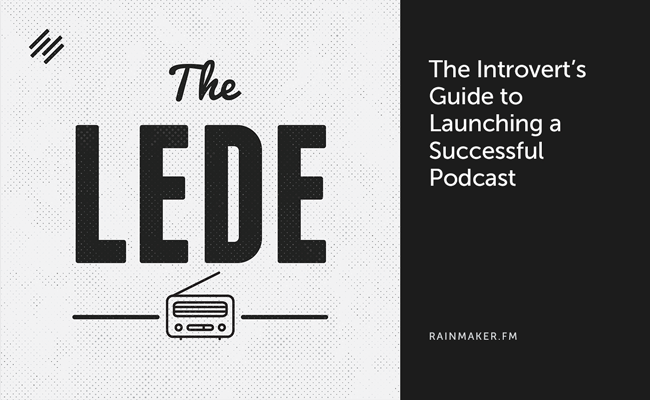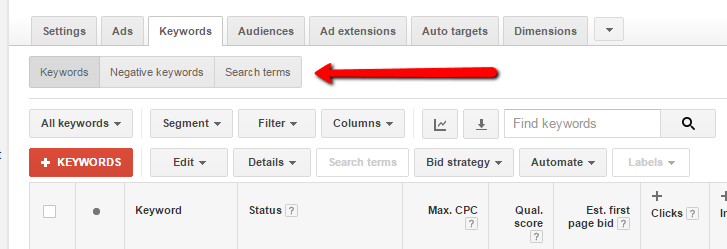
Tonight kicks off our Authority Rainmaker conference in Denver, Colorado, and many of us are terrified.
Here’s the thing: we’re a company mostly made up of introverts.
We all fall somewhere on an “introvert’s scale” that ranges from extreme discomfort in social settings, to mild dread, to slight concern before entering a packed room.
So an event like Authority Rainmaker tests us. It gives us a chance to practice extroversion, even if it’s just for a couple of days.
If your personality leans more toward introversion than extroversion, I have five tips that will help you the next time you need to act like an extrovert on command.
1. Take a deep breath
If you’re a true introvert, large events can make you feel like you’re under attack. You walk into a massive space with lots of people, noise, and activity. It’s hard to know where to go first.
There’s no navigation menu at a networking event. 
Before walking into a room like this, take a few deep breaths. And I don’t mean right outside the door, while looking in.
I mean before you even leave your space to go to the event.
Take a few quiet moments to close your eyes, breathe deeply, and center yourself.
After the event is over, you can come back to this quiet place. For now, visualize yourself enjoying the event, meeting new people, and smiling, laughing, and having a great time.
Cement those images in your mind by taking a few deep breaths while you visualize them.
Then open the door and walk toward the event. You’re ready.
2. Imagine they’re just as scared as you are
You’ve taken some deep breaths, and you’ve visualized a successful event.
But you might still feel scared.
Before you enter the event, imagine that everyone there is just as scared as you are. Your job is to help them feel at ease.
That’s right! Rather than focus on yourself and what you’re feeling, focus on the people you meet and how you can make them feel comfortable.
Moving your attention away from yourself and onto someone else will help you stay open to the experience.
Focusing on making the person you’re talking to feel comfortable will help you feel useful.
And focusing on others will help you forget the fear you may feel inside yourself.
3. Smile like you mean it
When I was in college, I used to go out to clubs with my roommate.
It was a deeply uncomfortable experience for me. I didn’t know what to do in a club and felt uneasy the entire time.
My roommate, on the other hand? She always found someone to talk to, always ended up dancing, and always seemed to be having the time of her life.
One night, on the way to a new club, I asked her how she did it.
She shared a great secret I still use today. She said:
You have to walk in there believing you are about to have a great time. Smile like you believe that. People want to talk to someone who looks like they’re enjoying themselves.
You might feel overwhelmed by the size of the room and the number of people.
But if you smile like there’s no place else you’d rather be, people will be drawn to you. And before you know it, you may start feeling as happy as you look.
4. Reach out first
The worst thing you can do at a networking event is stand there hoping someone draws you into a conversation.
You have to ignore your natural tendency to stick yourself to a wall, or hover by the refreshment table or bar like they’re security blankets.
Instead, look for someone who’s not actively engaged in a conversation.
Walk up, stick your hand out, and introduce yourself.
(That last sentence made you break out in a sweat, didn’t it?)
But that person will be so grateful you took the initiative.
And she’ll remember you. There’s no better way to make an impact than to take the lead and introduce yourself at a networking event.
So stick out that hand, say your name, and start a conversation with a new friend.
5. Gather now, sow the seeds later
True introverts will always feel more comfortable behind a computer screen than in front of a real, live person.
That’s why I recommend this final technique: Gather cards, and follow up online.
When you meet in-person, find a way to exchange contact details, whether it’s a business card or a text to someone’s phone.
Once you’re back in your quiet place and before you turn in for the night, take a moment to jot down any details you remember from the people whose contact information you took.
Once you’re back home, send them a quick email message to let them know you enjoyed meeting them.
Following up via a computer will allow you to build a real relationship within your comfort zone of online technology, and you can easily take the next step of staying in contact with them over time.
Practice extroversion? Yes.
As introverted as you might feel, practicing the tips above will help you look and behave like a bona fide extrovert.
Anyone can do it for a day or two.
And the payoff is worth it: new connections, new friends, and new opportunities await.














